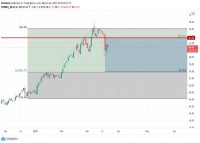|
Opalesque Industry Update - Despite a strong start to the year, which saw Q1 2019 average hedge fund performance hit +5.34%, investors continued to pull money from the business, redeeming an estimated $13.69 billion from the industry in March, according to the just-released March 2019 eVestment Hedge Fund Asset Flows Report.
Investors once again showed their dissatisfaction with underperforming products with elevated redemptions in March 2019. The outflows were enough to push Q1 into negative territory, which also made Q1 2019 the fourth consecutive quarter of redemptions for the industry. "Despite this aggregate negativity, we continue to see funds and segments receiving new allocations. Additionally, we see evidence of demand from US public plans via eVestment's MarketLens information," said the report. From these perspectives, the current state of flows appears to be less of a "hedge fund industry" issue and more of a performance issue. While poor performance may have been too widespread within the industry in 2018, no matter what asset class managers operate within, poor performance is rarely not an issue. "Whether underperformers can right their respective ships, we will have to wait and see, but it appears that one way or another, whether through performance improvements or redemptions ultimately leading to liquidations, these issues will be addressed," it added. March Redemptions Push Q1 Flows Negative Investors redeemed an estimated $13.69 billion from hedge funds in March 2019, bringing Q1 2019 flows to a negative $14.92 billion. Performance was again additive to total industry AUM, which ended Q1 at $3.258 trillion. • Q1 redemptions were the fourth consecutive quarter of net outflows for the industry. The last time the industry endured at least four consecutive quarters of net outflows was Q4 2015 through Q4 2016. Prior to then, the only other time was in 2008/2009. In terms of how this Q1 ranks with others, it is on par with redemptions in Q1 2016, which followed the difficult 2015 performance year. Generally speaking, Q1 has not been a quarter when money leaves the industry, unless there has been an exceptional prior year of returns. Those redemption pressures which followed2015 persisted for four quarters. • A very low proportion of funds had net new money coming in to end Q1 2019. Only 38% of reporting managers had net inflows in March. In the last three years only once has the proportion of managers receiving net inflows been lower, which was in December 2018. The implication is twofold, that redemption levels were elevated during the month, and there was little interest to offset those redemptions. This may be the theme for the year, one which consists of pockets of real interest, but being met with anoutgoing tide of redemption pressures. • Large macro, long/short equity, and managed futures funds which underperformed in 2018 were responsible for the majority of redemption pressures in March. If the industry could just remove the influence of this group, it would have been a positive March for net flows, and a positive Q1 to start 2019. Of course, that's cutting out a group of products which produced some very disappointing results in 2018. Managers in each segment should be encouraged, however, because for almost all of the groups of products within the same parameters, but that were able to produce at least positive returns in 2018, there are net inflows. The current flows don't appear to be a "hedge fund industry" issue, the current outflows appear to be a performance issue, and no matter what asset class managers operate within, poor performance is rarely not an issue. • Despite March redemptions, the multi-strategy universe ended Q1 with net inflows. Some large allocations to multi-strategy funds to begin the year more than offset redemption pressures in March. The segment had the largest inflows in Q1 of any primary strategy, however only 48% of reporting managers had net inflows during the quarter. While the demand for the strategy is strong, it is clearly not universally so. • Demand for hedge fund exposure does exist. Despite clear dissatisfaction, there is evidence of demand for hedge fund exposure. Outside of our calculated asset flow data, eVestment sees pockets of demand from U.S. pension plans via documents captured in our MarketLens solution. "In a report to be released later this month, we note that in aggregate U.S. public plans are slightly below target HF allocations, which implies a level of demand to move current allocations in-line with targets. The imbalance is slight, but it is clearly not negative," it said. • Q1 2019 ended up being very positive for aggregate EM flows, flows targeted to China. As EM hedge funds as a universe were receiving net inflows in January and February, we noted that while this was a positive, allocations were not widespread across the group. This theme continued into March, the result being that it appears like EM strategies are in high demand, but the data shows only 44% of reporting managers have had inflows in Q1. The bulk of the assets have gone to China-focused funds, with some targeted allocations to products which performed relatively well in 2018. • Both US and Europe domiciled fund segments had elevated redemptions in March, Asia sees inflows The bulk of Q1 redemptions, at least on an aggregate basis, came from European domiciled managers. US-based managers saw elevated outflows in March, but Q1 flows were near flat. Asia-domiciled managers saw inflows in March and Q1 overall. The majority of allocations to Asia-domiciled firms went to EM strategies, and there were mixed flows for macro managers.
|
Industry Updates
Investors continue to pull money from hedge funds despite performance rebound
Tuesday, April 23, 2019
|
|





 RSS
RSS








